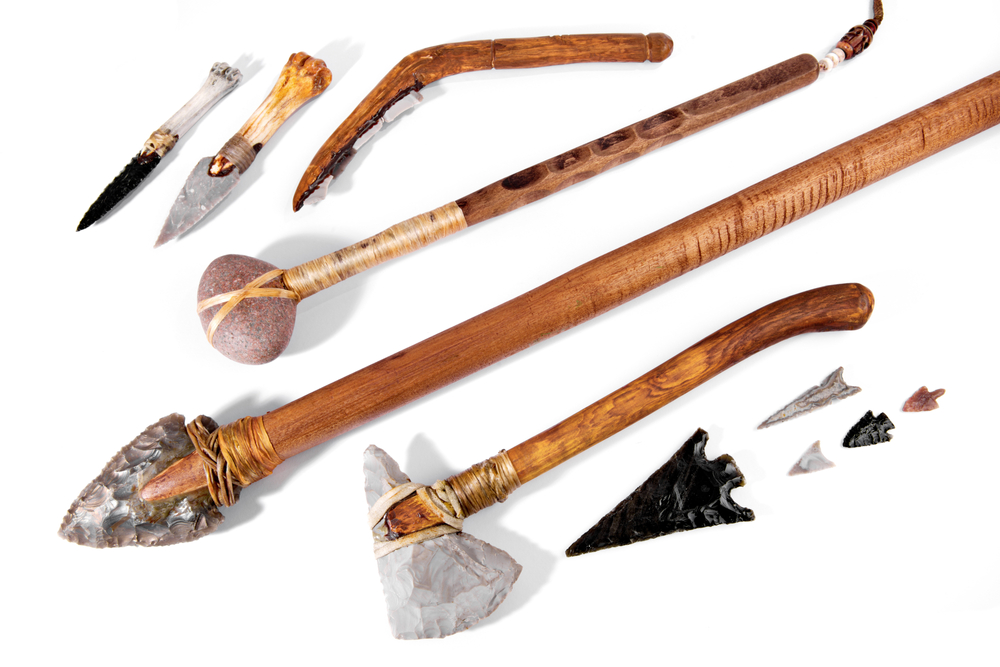Introduction: Setting the Stage for Warfare’s Beginnings
Imagine a world where survival hinged on the sharpness of a stone or the strength of a wooden spear. Early humans relied on primitive tools not just for hunting but also for defending themselves. Over time, these tools evolved into weapons, marking a turning point in human history. The journey from stone to steel is not just a tale of technological advancement—it’s the story of how humanity shaped its destiny through warfare.
From the first sharpened rocks to the mighty iron swords of empires, weapons became more than tools. They were symbols of power, survival, and progress. Let’s dive into the epic evolution of ancient weapons and discover how they transformed human civilization.
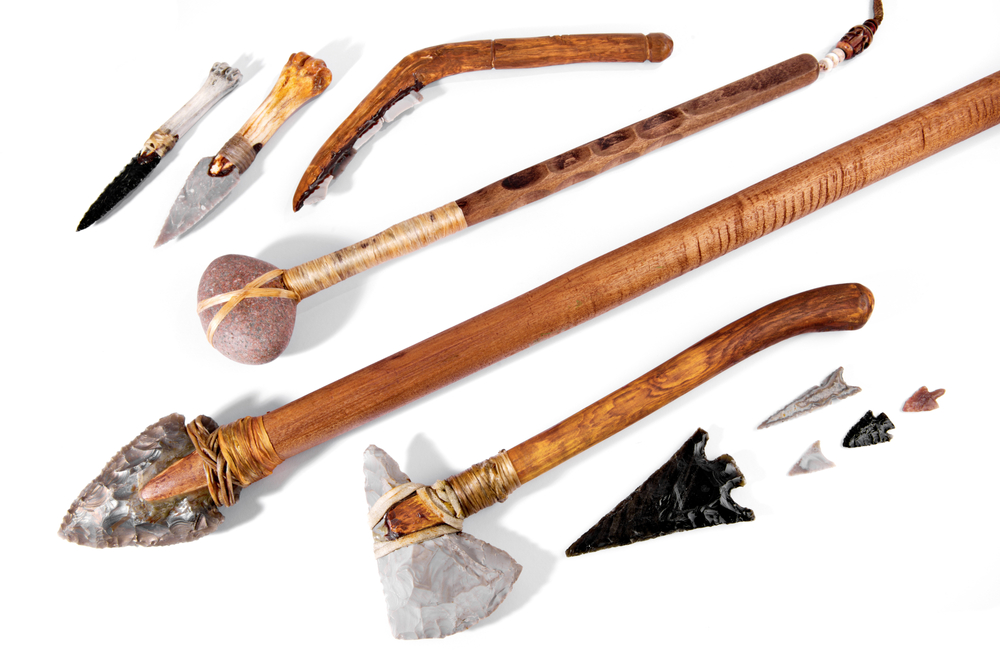
Credit: Discover Magazine
The Dawn of Tools: Stone and Wood in Prehistoric Warfare
The earliest weapons were born out of necessity. Sharpened stones, wooden spears, and slings were the first tools humans used to hunt and defend themselves. Around 64,000 years ago, the invention of stone-tipped arrows revolutionized warfare. These weapons allowed early humans to take down larger prey and fend off rival groups.
Simple yet effective, these tools laid the foundation for more advanced weaponry. They also fostered the growth of early tribal societies, where survival depended on strength and skill.
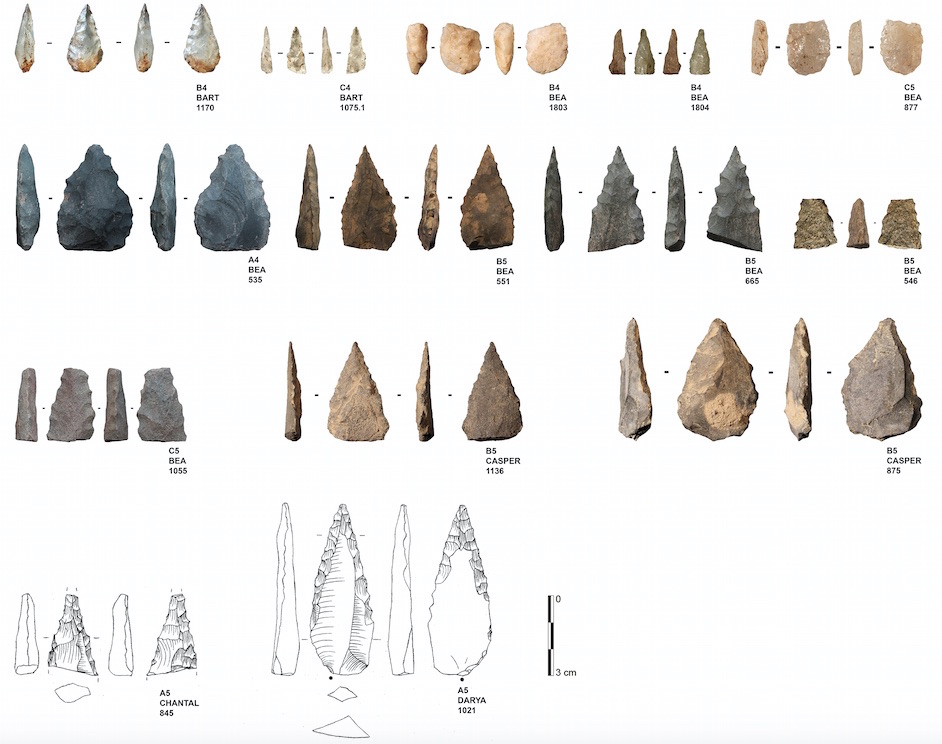
Credit: Live Science
The Metallurgical Revolution: From Copper to Bronze
The discovery of copper marked a significant leap in weapon technology. However, copper’s softness limited its effectiveness. This led to the development of bronze, a stronger alloy made by combining copper and tin. Bronze swords, axes, and armor soon became the weapons of choice in early empires like Mesopotamia and Egypt.
The introduction of composite bows further changed the game. These bows, made from layers of wood, horn, and sinew, offered greater range and accuracy. Warfare was no longer just about brute force—it was about precision and strategy.
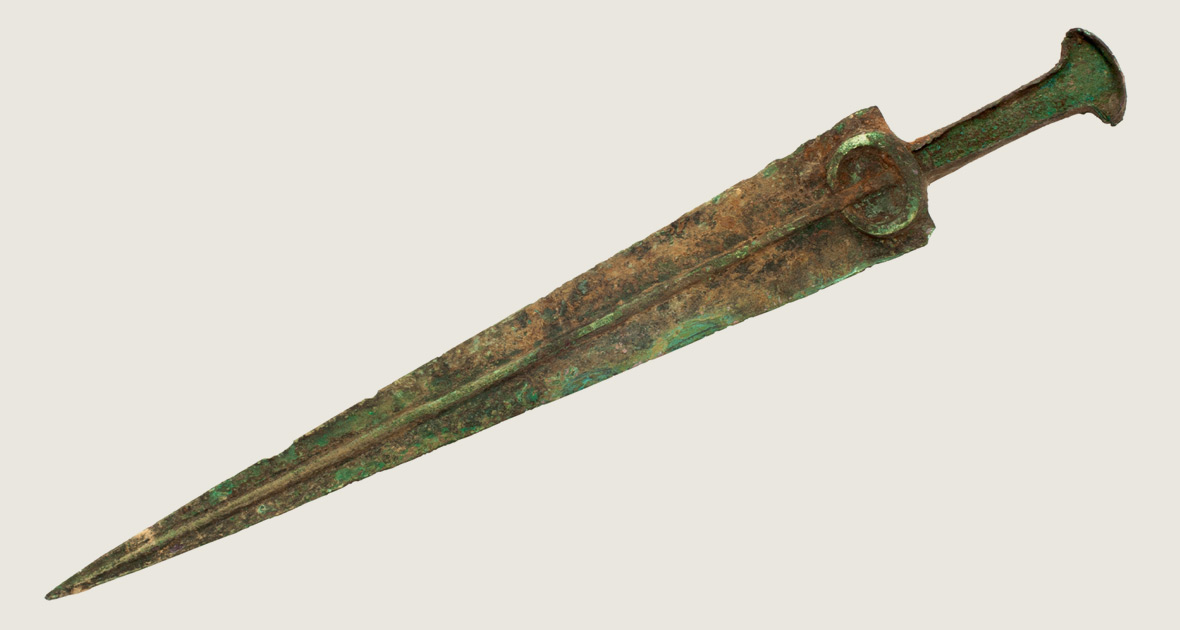
Credit: Battle Merchant
Iron and Empires: The Assyrian Military Machine
Iron changed everything. Around 1200 BCE, the Assyrian Empire harnessed the power of iron weapons to dominate the ancient Near East. Iron swords, spears, and armor were sharper and more durable than their bronze counterparts. The Assyrians also pioneered advanced siege tactics, using battering rams and siege towers to conquer fortified cities.
This technological edge allowed the Assyrians to build one of history’s first superpowers. Their military innovations set the standard for future empires.
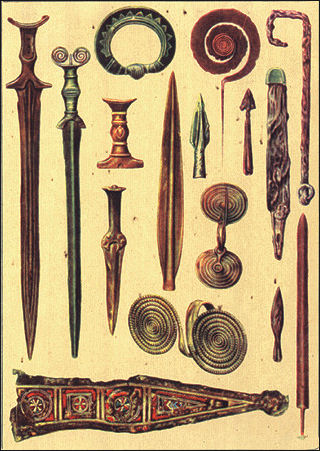
Credit: Facts and Details
Key Figures and Pivotal Battles: Shaping the Course of Warfare
Leaders like Sargon of Akkad and Ramses II understood the power of advanced weaponry. Sargon used bronze weapons to build the Akkadian Empire, while Ramses II relied on chariots and composite bows to defend Egypt.
The Hyksos invasion of Egypt forced the Egyptians to adopt superior weapons, including chariots and advanced bows. The Battle of Kadesh, fought between the Egyptians and Hittites, showcased the strategic use of iron weapons and chariots. These battles weren’t just about territory—they were about survival and dominance.
Societal Impact and Military Strategies
Weapons didn’t just change warfare—they transformed society. The need for skilled warriors led to the rise of professional armies. Superior weaponry enabled empires to expand their borders, trade with distant lands, and exchange cultures.
Military leaders often became rulers, shaping political systems and governance. Weapons were no longer just tools of war—they were instruments of power and progress.
Legacy of Ancient Weapons: From Chariots to Gunpowder
The innovations of the ancient world didn’t disappear with the fall of empires. Chariots, composite bows, and iron weapons influenced medieval and Renaissance warfare. The introduction of gunpowder in the 9th century marked the next chapter in military technology, building on the foundations laid by ancient weapons.
Even today, the principles of ancient warfare—strategy, precision, and innovation—continue to shape modern military tactics. The weapons of the ancient world were more than tools of destruction—they were the building blocks of civilization.
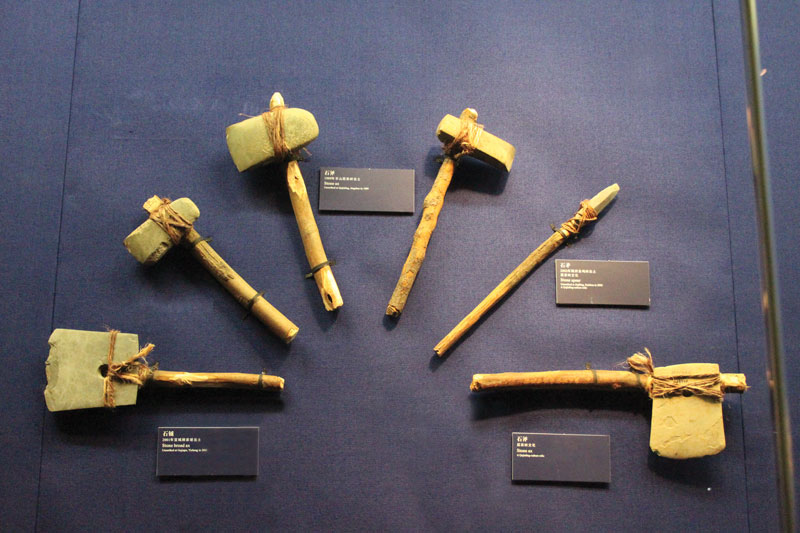
Credit: Rock & Gem Magazine
Conclusion: The Epic Journey from Stone to Steel
From sharpened stones to gleaming iron swords, the evolution of ancient weapons is a testament to human ingenuity. These tools didn’t just shape the battlefield—they shaped the course of history.
The weapons of the ancient world were more than instruments of war. They were the catalysts of progress, the foundation of empires, and the legacy of human achievement. As we look back at this epic journey, one thing becomes clear: the story of ancient weapons is the story of us.
References:
From Stone Tools to Guns: A Timeline of Ancient Weapons – link
Humans Mastered Advanced Weapon-Making Technique 77,000 Years Ago – link
Swords: Evolution from bronze to steel – link
Stone Age and Bronze Age Weapons and Forts – link
Ancient Artifacts: Rocks as Weapons – link
Categories: Ancient History, Historical Evolution, Military Technology, War History, Warfare, Weaponry
Tags: Ancient Weapons, Bronze Age, Iron Age, Military History, Stone Age, warfare evolution
Religion: N/A
Country of Origin: Assyria, China, Egypt, Greece, India, Mesopotamia, Rome
Topic: The Evolution of Ancient Weapons
Ethnicity: N/A


